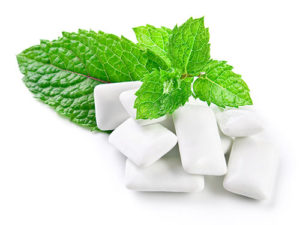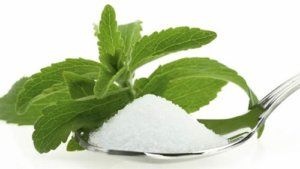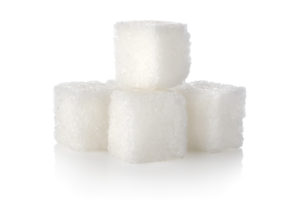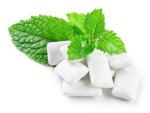During the Second World War, in the absence of conventional sugar, Scandinavians began to use sugar which is received from the bark of birch trees. After that, interest in Xylitol began again in the eighties and has continued to grow to this day.  Until now, it has only been available in the Xylitol gums, toothpastes and occasional food. Now it can be purchased as a powder. There are also candy with xylitol. Comparing to the Aspartame, an artificial sweetener associated with cancer, and to white refined sugar associated with obesity and caries, Xylitol has gained in importance. Xylitol is completely different from sugar gained from sugarcane and sugar beet. It contains 40% less calories than regular sugar and glycemic index of 7, unlike ordinary sugar which has the value of 64. It tastes like regular sugar and it looks like an ordinary sugar because it comes from the same family, but is chemically quite different and behaves in just as a different way. It would be best if in the food sugar is not even added, but since that is impossible, this is certainly the best solution.
Until now, it has only been available in the Xylitol gums, toothpastes and occasional food. Now it can be purchased as a powder. There are also candy with xylitol. Comparing to the Aspartame, an artificial sweetener associated with cancer, and to white refined sugar associated with obesity and caries, Xylitol has gained in importance. Xylitol is completely different from sugar gained from sugarcane and sugar beet. It contains 40% less calories than regular sugar and glycemic index of 7, unlike ordinary sugar which has the value of 64. It tastes like regular sugar and it looks like an ordinary sugar because it comes from the same family, but is chemically quite different and behaves in just as a different way. It would be best if in the food sugar is not even added, but since that is impossible, this is certainly the best solution.  Regular sugar quickly burns out when is found in the digestive tract and so after a meal that contains sugar you again feel hungry. With Xylitol this is completely different. University study showed that people who ate yogurt for breakfast with Xylitol, consumed 10% less food in the day. Children and adults who use Xylitol toothpaste have fewer cavities and fillings, less than those who use ordinary toothpaste. This is because the bacteria that causes tooth decay can not eat this sugar and their growth is significantly reduced. The number of these bacteria may fall as much as 90%. Since bacteria can not stick to the surface of teeth when you take Xylitol the amount of plaque is reduced. This not only prevents tooth decay but can also repair the damage to the enamel of the teeth.
Regular sugar quickly burns out when is found in the digestive tract and so after a meal that contains sugar you again feel hungry. With Xylitol this is completely different. University study showed that people who ate yogurt for breakfast with Xylitol, consumed 10% less food in the day. Children and adults who use Xylitol toothpaste have fewer cavities and fillings, less than those who use ordinary toothpaste. This is because the bacteria that causes tooth decay can not eat this sugar and their growth is significantly reduced. The number of these bacteria may fall as much as 90%. Since bacteria can not stick to the surface of teeth when you take Xylitol the amount of plaque is reduced. This not only prevents tooth decay but can also repair the damage to the enamel of the teeth.  Our saliva contains everything you need to recover a tooth in the early stages of tooth decay. If the sugar enters only a few times during the day saliva itself can do the job, but when sugar enters more than once a day that is not the case. When Xylitol is taken instead of normal sugar, concentration of basic amino acids and ammonia is increased and the pH of plaque also increases. When the pH is over 7 calcium and phosphate salts are moving towards those parts of the enamel, which are weak. Thus, the soft parts of the enamel, which are in deficit with calcium are strengthened again.
Our saliva contains everything you need to recover a tooth in the early stages of tooth decay. If the sugar enters only a few times during the day saliva itself can do the job, but when sugar enters more than once a day that is not the case. When Xylitol is taken instead of normal sugar, concentration of basic amino acids and ammonia is increased and the pH of plaque also increases. When the pH is over 7 calcium and phosphate salts are moving towards those parts of the enamel, which are weak. Thus, the soft parts of the enamel, which are in deficit with calcium are strengthened again.  There are over 300 clinical studies on Xylitol and so far nothing negative has been found. Some studies have shown that it’s consummation can even prevent the bone loss that causes osteoporosis. All in all Xylitol is the new wave ingredient which will help you keep your teeth healthy. But, what is the reason for such poor use of Xylitol? Naturally – it is the price. Its production is quite expensive. Five times more expensive than production from sugarcane or sugar beet. Therefore, the price of Xylitol is high. But the good thing is that it is very sweet and they will use it in much smaller quantities, so it will last longer. [thrive_posts_gallery category=’78’ title=”Our Top Xylitol Articles” no_posts=”6″ filter=”popular”]
There are over 300 clinical studies on Xylitol and so far nothing negative has been found. Some studies have shown that it’s consummation can even prevent the bone loss that causes osteoporosis. All in all Xylitol is the new wave ingredient which will help you keep your teeth healthy. But, what is the reason for such poor use of Xylitol? Naturally – it is the price. Its production is quite expensive. Five times more expensive than production from sugarcane or sugar beet. Therefore, the price of Xylitol is high. But the good thing is that it is very sweet and they will use it in much smaller quantities, so it will last longer. [thrive_posts_gallery category=’78’ title=”Our Top Xylitol Articles” no_posts=”6″ filter=”popular”]







